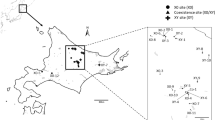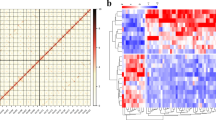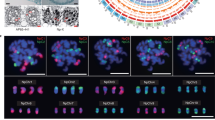Abstract
DURING the course of a chromosome survey of the north-west Indian angiosperms, I have found two new basic numbers in the Caryophyllaceae of the Pan jab Plains.
This is a preview of subscription content, access via your institution
Access options
Subscribe to this journal
Receive 51 print issues and online access
$199.00 per year
only $3.90 per issue
Buy this article
- Purchase on Springer Link
- Instant access to full article PDF
Prices may be subject to local taxes which are calculated during checkout
Similar content being viewed by others
References
Darlington, C. D., and Wylie, A. P., “Chromosome Atlas of Flowering Plants” (Allen and Unwin, Ltd., London, 1955). Cave, M. S., et al., “Index to Plant Chromosome Numbers” (Calif. Bot. Soc., 1956, 1957 and Supplement); “Index to Plant Chromosome Numbers” (Univ. North Carolina Press, 1958).
Heaslip, M. B., Ohio J. Sci., 51, 62 (1951).
Mulligan, G. L., Canad. J. Bot., 35, 779 (1957).
Author information
Authors and Affiliations
Rights and permissions
About this article
Cite this article
KHOSHOO, T. Basic Chromosome Numbers in Silene and Saponaria . Nature 186, 412–413 (1960). https://doi.org/10.1038/186412a0
Issue Date:
DOI: https://doi.org/10.1038/186412a0
This article is cited by
-
Ein Beitrag zur Zytotaxonomie der GattungSilene L. in Griechenland
�sterreichische Botanische Zeitschrift (1966)
-
Cytogenetical approach to the taxonomy ofSilene conoidea-conica complex
Proceedings / Indian Academy of Sciences (1963)
Comments
By submitting a comment you agree to abide by our Terms and Community Guidelines. If you find something abusive or that does not comply with our terms or guidelines please flag it as inappropriate.



